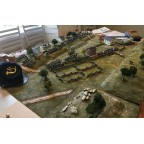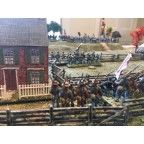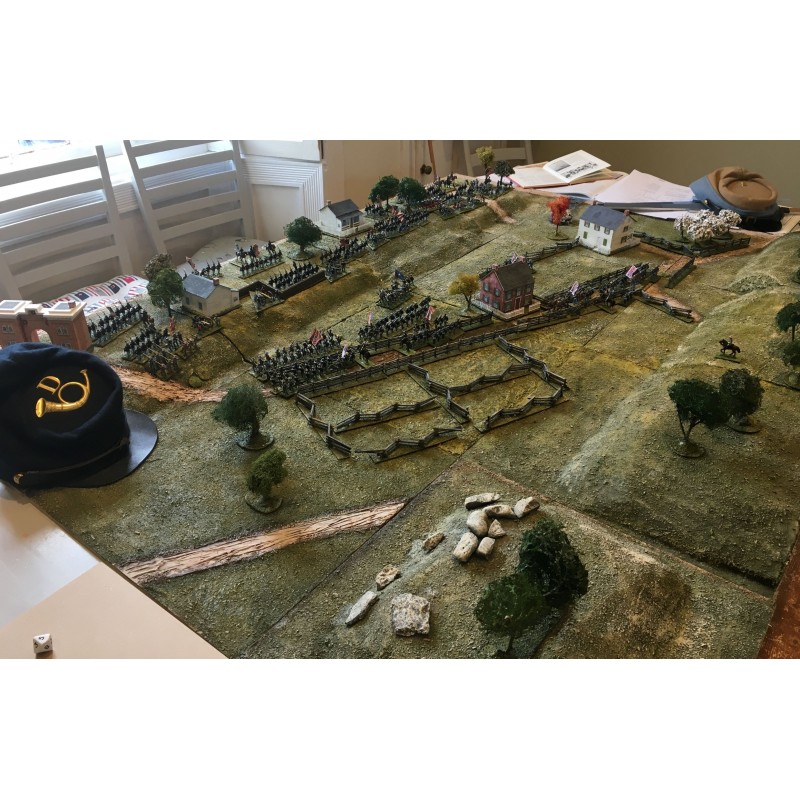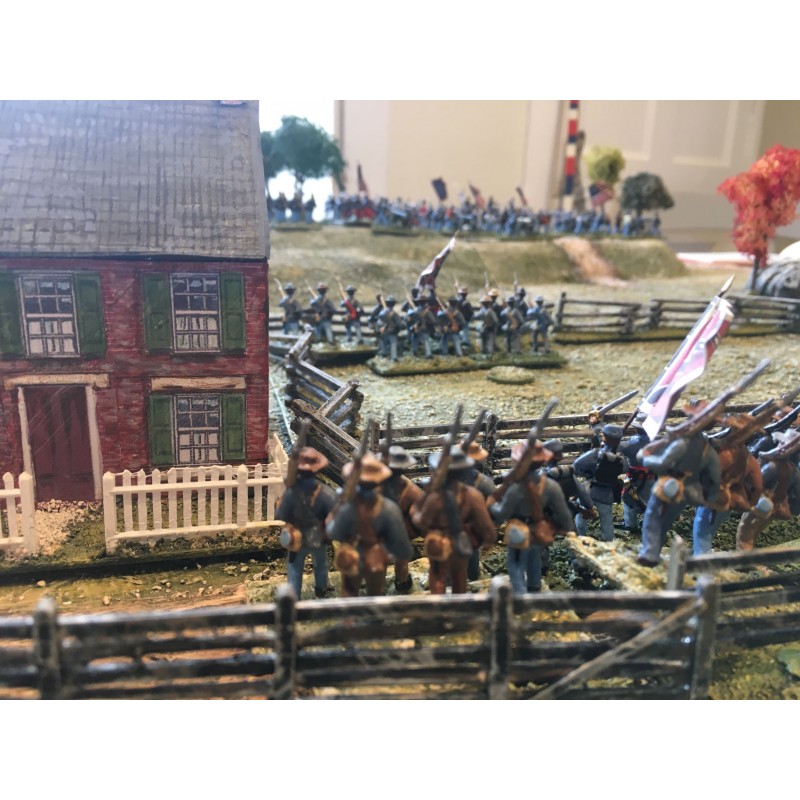This product is sold unpainted.
Additional Images.
1. Another shot of the running figure alongside an advancing Confederate in kepi and with blanket roll. The building is by Hovels.
2-4. These wonderful images are kindly provided by Iain Gale. he has set about recreating the Callan movie Gettysburg table. What you see in image 1 is part of the battlefield made up of scenic tiles Iain made himself. There are many more to follow. The remaining images show a small game Iain put on with his Son. The main action is day 3 and Pickett's charge leading to the high watermark of the Confederacy. These particular images show the troops of Pettigrew and Trimble as well as Garnett at the Cordori house. The figures are Jacklex and the whole thing looks fantastic. I cannot wait to see the finished battlefield.
THE LAST NAPOLEONIC WAR
If you have never read Paddy Griffith’s ‘Rally Once Again, Battle
Tactics of the American Civil War’ Crowood Press, 1987, then I would
recommend a reading wholeheartedly. At the time of publishing it was considered
to hold many a controversial view. I have quoted some key parts of his conclusion
below.
‘First there is the idea that the rifle musket revolutionised tactics.
This is demonstrably false, simply by reference to the short range and long
duration of firefights. Attacking formations were not mown down before they
arrived close to the enemy, but managed to install themselves at highly ‘Napoleonic’
ranges and slog it out until al ammunition was used up. Nor did the new rifles
prevent artillery from operating at canister range from the enemy. Nor was the
cavalry swept from the field by improved firepower. Improved weaponry did not
force the armies to dig fortifications, but fashion and book-learning did.’
‘In many respects the Civil War was comparable in scale to the European
warfare of almost any four-year period of Napoleon’s career. The battles were
certainly fought with essentially Napoleonic weaponry and tactics, although the
doctrinal emphasis on fortifications would doubtless have appeared a little odd
and old-fashioned to the restless Corsican. He would presumably have been
mightily puzzled to discover how such an approach had been identified by West
Point professors as being the logical extension of Napoleonic warfare.’
‘A few significant military factors had unquestionably changed since Napoleonic
times, especially the ability to switch reinforcements quickly from one theatre
to another by rail. Taken together with the new strategic telegraph, this
represented a genuine innovation in the art of war, although its effect was
often counterbalanced by other factors to the extent that it scarcely seemed to
change the overall tempo of operations. In naval affairs the technological
revolution may justly be seen as fundamental, but on land this clam seems
somewhat exaggerated.’
‘If we wish to find land combats which are truly the first modern
battles in history, it is surely to the north-east corner of France in the year
1870 that we must look. Here we find march manoeuvres integrated with rail-born
mobilisation such as was scarcely glimpsed by Davis and Lincoln. We find
effective massed shelling at ranges significantly greater than 1,000 yards of
classical practice, and we find the infantry going to ground many hundreds of
yards from their opponents, under genuine long-range musketry and – Dr Gatling’s
early experiments notwithstanding – the first large-scale use of machine guns.
In the Franco-Prussian War the new weapon technologies which had been little
more than blueprints and prototypes in the American Civil War finally came
forward as robust, practical implements of everyday use.’


%20(2)-800x800.JPG)
%20(2)-144x144.JPG)
-144x144.JPG)


-144x144.JPG)
-800x800.JPG)


-800x800.JPG)